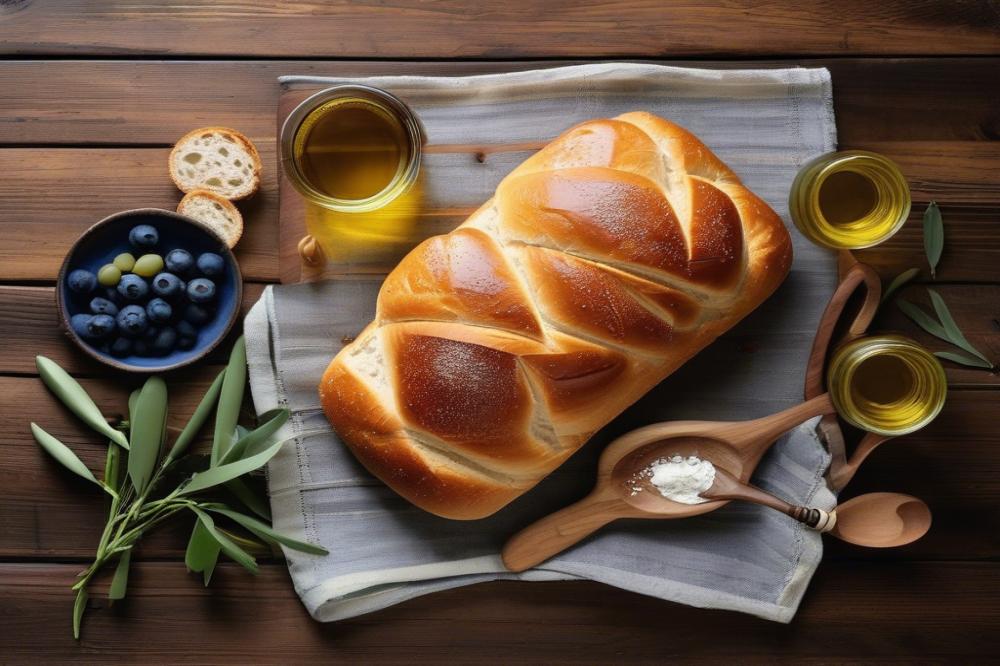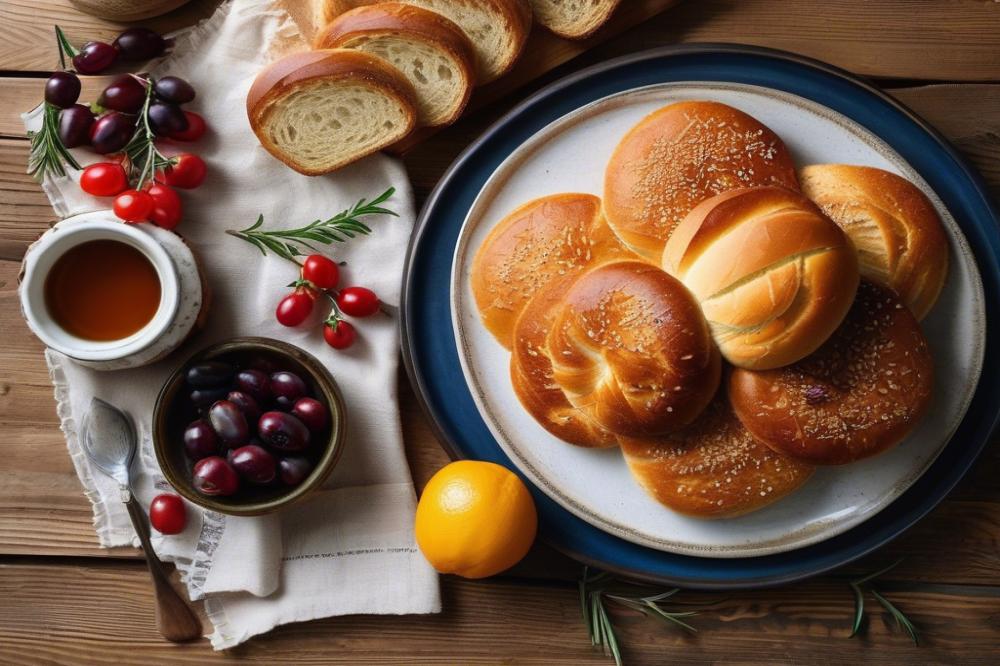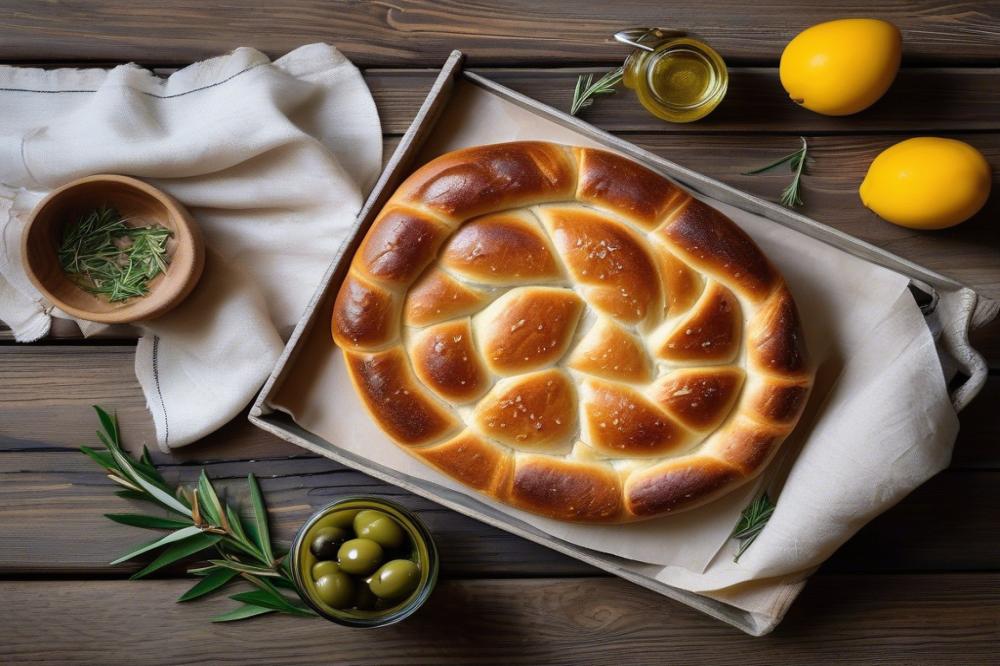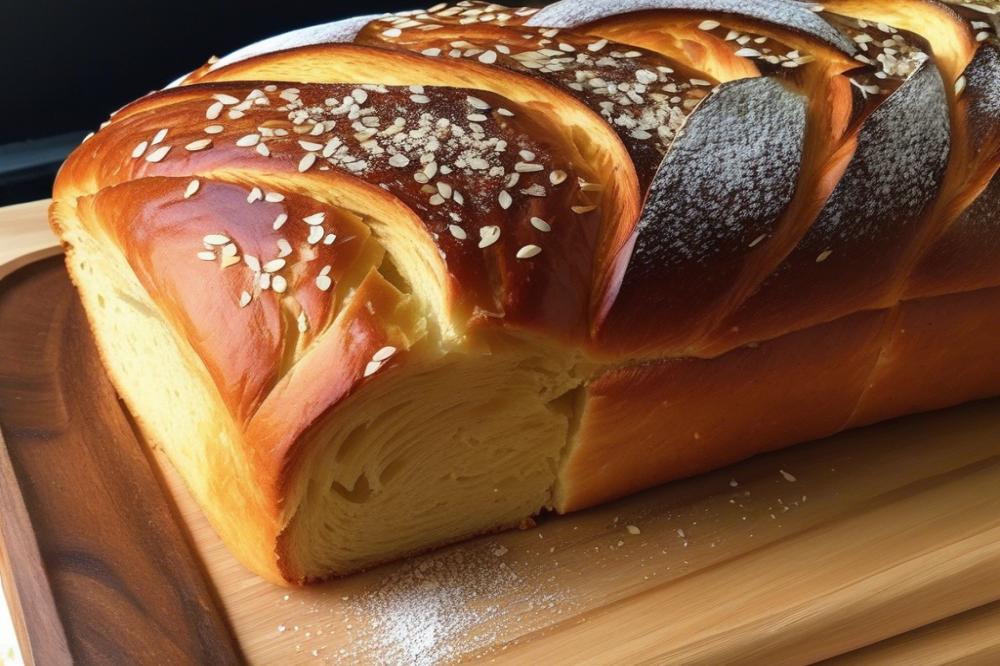Introduction
recipebix.com/how-to-bake-galaktoboureko-greek-custard-pie”>Tsoureki is a cherished type of recipebix.com/how-to-make-flogeres-greek-phyllo-pastry-rolls”>Greek Sweet Bread, celebrated for its rich flavors and beautiful braided shape. This delightful pastry is not just a snack; it carries a significant meaning in Greek culture. traditionally, families gather during special occasions to bake this festive bread, making it an essential part of their celebrations.
At Easter, Tsoureki takes center stage. It symbolizes the end of fasting and the joy of resurrection. Each year, families engage in the ritual of preparing this unique Easter bread, infusing their homes with warm aromas of cinnamon and cardamom. Recipe variations abound, showcasing regional and familial touches, yet the essence remains unchanged.
Enjoying this sweet bread together fosters a sense of community and belonging. Many gather to share stories and laughter, making the baking experience memorable. As a beloved holiday recipe, it not only nourishes the body but also the spirit, connecting generations through tradition.
What is Tsoureki?

Tsoureki is a beloved Greek Sweet Bread that holds a special place in the hearts of many families. This rich, fluffy pastry is often enjoyed during Easter celebrations. Its golden-brown crust and soft, airy inside make it a favorite for both young and old. traditionally, a hint of sweetness comes from sugar, while spices like cinnamon and cardamom add delightful flavors. The unique braid shape of this bread also sets it apart from other pastries.
The origins of this festive bread date back many centuries. Greeks have baked versions of this recipe for special occasions, especially during religious holidays. This custom highlights the connection between food and culture in Greece. Many see Tsoureki as more than just food; it is a symbol of love and sharing during festive times. Stories of families gathering to bake together are common, reflecting a strong community bond. Such traditions reinforce the importance of preparing meals as a way to connect with one another.
Throughout Greece, variations of this Easter bread can be found. Different regions often put their own twist on the traditional recipe. In some areas, you may find additions like nuts or dried fruit to enhance the taste. Others may make it without eggs for a lighter texture. Some families even create their own recipes, making each loaf special. This diversity shows how each community values its culinary heritage. Each bite of Tsoureki tells a story of its local roots and family traditions.
Ingredients and Measurements

To prepare this traditional Easter bread, you’ll need the following ingredients:
- Flour: 1 kg
- Sugar: 200 g
- Milk: 250 ml
- Yeast: 10 g (active dry yeast)
- Butter: 150 g
- Eggs: 3 large
- Orange zest: from 1 orange
- Cinnamon: 1 tsp
- Cardamom: 1/2 tsp
- Salt: 1 tsp
- Sesame seeds or slivered almonds: for topping
Nutritional Information
Each ingredient contributes different nutritional benefits. Flour acts as the main structural component. It provides carbohydrates necessary for energy. Sugar adds sweetness and helps with browning during baking. Milk brings moisture and creates a tender crumb. Butter enhances richness and flavor while contributing to a soft texture. Eggs bind everything together and give the bread its beautiful color. Orange zest adds a fresh, citrusy note, creating a nice contrast. Cinnamon and cardamom give a warm aroma that is pleasing and festive. Salt is essential for flavor enhancement. Toppings like sesame seeds or slivered almonds offer delightful crunch and visual appeal.
Role of Each Ingredient
Flour is the backbone of this Greek pastry. Without it, the dough wouldn’t hold together. Sugar sweetens the flavor, making it a true treat during holidays. Milk introduces moisture, contributing to the soft texture of the sweet bread. Yeast is a powerful ingredient as it helps the dough rise. This creates a light and airy feel, which is key for a festive bread. Butter brings a rich taste that elevates the overall quality. Eggs play a significant role, adding both moisture and structure. They also promote browning, giving the bread its attractive golden crust.
Orange zest brightens the flavor profile. Surprisingly, it adds a refreshing note that balances the sweetness. Cinnamon and cardamom lend warmth and depth to the aroma. These spices are traditional in many Greek recipes, adding a comforting touch. Salt, though often overlooked, is crucial. It enhances the flavors and balances the sweetness of the other ingredients. Finally, the topping offers a delightful crunch and adds an attractive finish once baked.
Baking Instructions

Step-by-step method for preparing Tsoureki
The journey of creating a traditional Greek sweet bread begins with activating the yeast. Combine warm milk and sugar in a small bowl. Sprinkle the yeast over the milk and let it sit for about ten minutes. Watch for bubbles forming; this means your yeast is alive and ready.
Next comes mixing the dough. In a large bowl, combine the flour, salt, cinnamon, and cardamom. Mix these dry ingredients together to ensure they are well combined. Make a well in the center and pour in the activated yeast. Add eggs and melted butter to the mixture, then stir until a shaggy dough forms.
Kneading is crucial for developing the right texture. On a floured surface, turn out the dough. Knead it for about ten minutes. The dough should become smooth and elastic. Now, place it in a greased bowl, covering it with a cloth. Allow it to rise in a warm place until it has doubled in size, typically one to two hours. This first rise is essential for texture.
After the dough has risen, it’s time to shape the loaf. Punch down the dough gently to release the air. Divide it into three equal parts. Roll each piece into a long strand. Braid the strands together in a traditional way. This braiding not only looks beautiful but also makes the bread festive.
The second rise is important for fluffiness. Place the braided loaf on a baking sheet lined with parchment paper. Cover it again and let it rise for an additional 30 to 45 minutes. This step gives the bread volume.
Prepping for baking involves an egg wash for a golden crust. Beat one egg and brush it over the loaf carefully. This technique adds color and shine. You may also sprinkle sesame seeds on top for a delightful crunch.
The oven needs to be preheated to 350°F (175°C) before baking. Bake the bread for about 25 to 30 minutes. Look for a golden brown color as an indicator that it’s ready. A hollow sound when tapping the bottom of the loaf confirms doneness.
Tips for achieving the perfect texture and flavor
To create a truly unique Tsoureki, always use fresh ingredients. Fresh yeast works better than expired. Adjust the spices according to your taste; some may prefer a stronger cinnamon flavor while others may enjoy a hint of cardamom. If you want a sweeter bread, add more sugar to the dough. It’s all about personal preferences.
Humidity can affect the dough. On a rainy day, you might need a little extra flour if the dough feels too sticky. Patience is also key; give the dough ample time to rise. This waiting period enhances both flavor and texture.
Finally, enjoy this special Greek pastry with your family, especially during Easter. The delightful aroma of sweet bread baking fills the home, creating a warm, inviting atmosphere. Remember, baking is not just a task; it’s a tradition that celebrates togetherness.
Cultural Significance

In Greek culture, the role of this sweet bread during Easter is profound. It symbolizes joy and the arrival of spring. Families often gather to prepare this traditional recipe as a way to celebrate the holiday together. The rich aroma of baking fills their homes, uniting loved ones in the kitchen. Many associate the making of this festive bread with joyful memories from childhood.
During Easter celebrations, it becomes a centerpiece on the holiday table. The braided shape often represents the Holy Trinity. Sharing it among family and friends signifies generosity and love. Each bite is a reminder of tradition and togetherness. Unique recipes may vary from one household to another, yet the sentiment remains the same.
Baking during this season holds great meaning. Each member of the family contributes to the process, creating a sense of teamwork. Some might take charge of kneading the dough while others measure spices like cinnamon and cardamom. This collaboration strengthens family bonds and builds lasting memories. Special techniques and tips are often passed down through generations.
The symbolism behind the braided shape is especially noteworthy. It adds a layer of significance beyond taste alone. This design often reflects the intertwining of time and family connections. With every braid, stories are told. The act of sharing the finished product brings everyone closer together, making each slice special. In many ways, it encapsulates what Easter means to Greeks.
Variations on the Traditional Recipe
Many people enjoy putting their spin on the classic recipe. Flavors can be altered by adding unique ingredients like mastic or mahleb. Mastic, which comes from the resin of the mastic tree, adds a fragrant aroma and a slightly pine-like taste. Mahleb, a spice made from cherry pits, gives a sweet yet slightly bitter flavor. Both ingredients elevate the sweet bread, making it a special treat.
For those avoiding gluten, there are adaptations available. Gluten-free flours can replace the traditional wheat flour. Many recipes combine rice flour, almond flour, and cornstarch to achieve a similar texture. Baking times may differ, so it’s good to monitor the bread closely to achieve that golden brown crust.
Some bakers look for modern twists on this holiday recipe. Adding chocolate chips or dried fruits can surprise anyone who tries it. Another popular twist involves incorporating nuts for added crunch. A hint of orange or lemon zest might brighten the flavor profile. With cinnamon and cardamom included, these variations make the festive bread even more delightful. Creating a unique version is a fun way to celebrate gatherings.
Final Thoughts on Tsoureki and Its Place in Greek Culture
A Sweet Symbol of Tradition
This sweet bread holds deep cultural significance in Greece. Often enjoyed during special occasions, it represents joy and celebration. Many families have their own variations of the recipe, passed down through generations. This traditional bread is not just food; it embodies history and shared moments around the table. Each bite can evoke memories of family gatherings and festive times.
Make It Yourself
Trying your hand at baking this delightful bread can be an exciting experience. You might feel a connection to your ancestors as you mix, knead, and shape the dough. The aroma that fills your kitchen will bring warmth and nostalgia. Making this dish at home allows for creativity, so don’t be afraid to add your personal touch. It can be a fun activity for family and friends, nurturing bonds while crafting something delicious.
Explore More Greek Recipes
Discovering the world of Greek cuisine can be a journey filled with flavor. From savory dishes to delightful desserts, there’s much to explore. Each recipe tells a story and adds richness to various occasions. Consider diving into more classic dishes, enriching your culinary skills along the way. As you explore, you might just find new favorites that bring joy to your home. Enjoy the process, and happy cooking!



